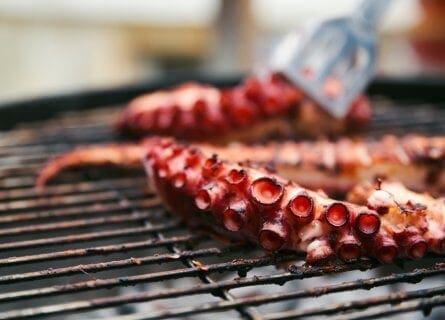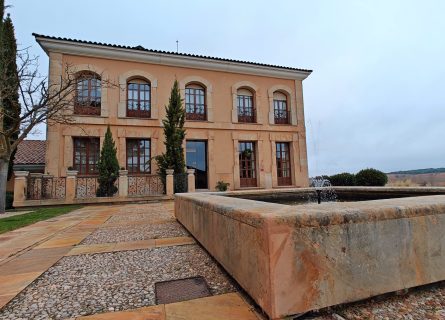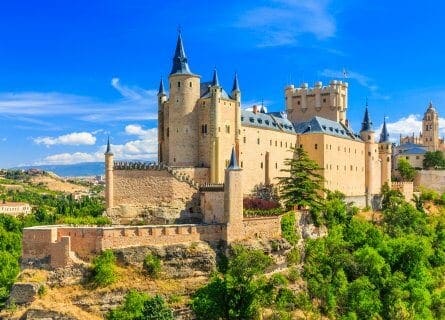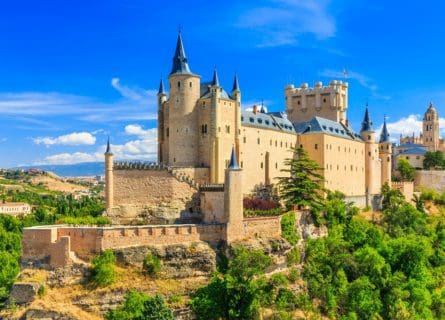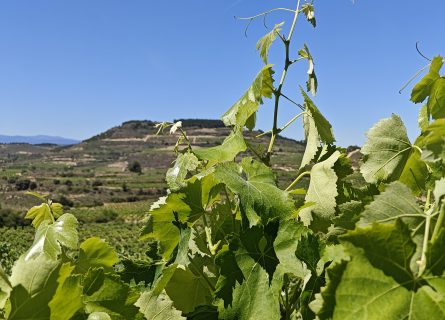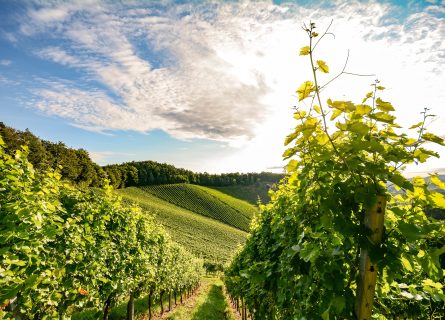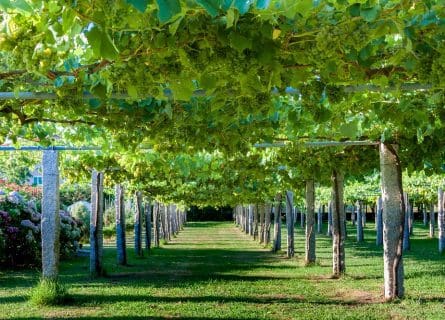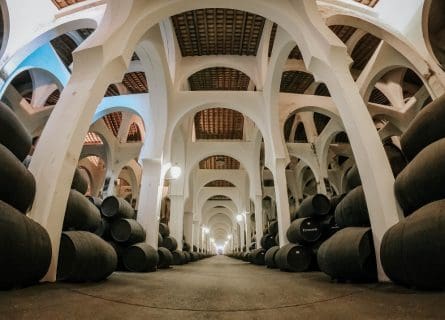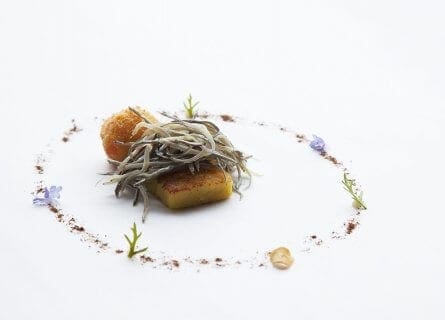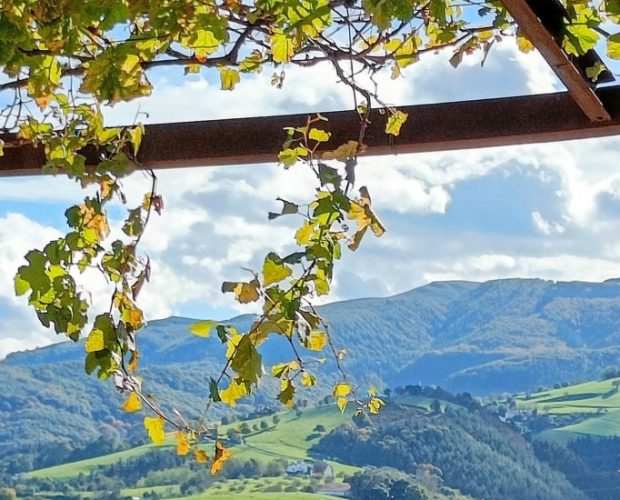
Pamplona Travel Guide
Indulge in the Flavors of Pamplona - A Food Lover's Journey Through Northern Spain
Pamplona, the delightfully picturesque capital of the Navarra region, is best known for its daredevil bull-running fiesta, which is held in July. Hoards of tourists pour into the city during the festival of Los Sanfermines, which gained worldwide fame after Ernest Hemingway described it in his novel The Sun Also Rises. If you like frenetic energy, you’ll love Pamplona during this period – the city explodes into life. Yet a visitor to Pamplona in May or September, for example, will see a different side to this multifaceted city. This charming, elegant destination is bursting with history on every street corner.
Indeed, it is no exaggeration to say that Pamplona boasts a long and proud history. Like many regions across the Iberian Peninsula, the area was first inhabited around 800,000 BC – hunter-gatherers led a nomadic lifestyle. However, they were eclipsed by a Neolithic farming population from 5000 BC. First, in a wave of settlers from the Mediterranean, the Phoenicians landed in 1100 BC, to be followed by the Greeks and Carthaginians. However, all these powers were eventually supplanted by the Romans, who arrived in 218 BC.
Over the next few hundred years, the Roman way of life was implanted across Spain – Pamplona or Iruna in Basque is said to have been founded by the Roman General Pompey in 75 BC. The Romans managed to keep control of the Iberian Peninsula for centuries until the Western Empire collapsed in the 5th century AD. This was a dark period for the citizens of Pamplona; the settlement was repeatedly attacked and overrun during the many battles between the competing powers of the Visigoths, Basques, and Franks. In 466, Pamplona was taken by the Visigoths count Gauteric, who subsequently lost the settlement to the Franks in 541. However, in 581, it was retaken by the Visigothic king Liuvigilid, who fought back the Basques from northern Spain. This was indeed a turbulent and dangerous time for all Navarrans.
Yet during this era, the first mentions of Saint Fermin arise – the first bishop of Pamplona is said to have baptized 40,000 pagans in just three days. Today, all of Pamplona celebrates his legacy in July by participating in Spain’s most legendary festival – Los Sanfermines. In the famous encierro (bull running), six bulls are traditionally released early each morning to run from their corral through the narrow, cobbled streets of the beautiful old town. On the last night of this week-long, non-stop party, crowds with candles sing Basque songs in the main square. It’s truly a sight to behold.
In 711, Arab and Berber armies crossed into Spain from North Africa and quickly subdued most of the country. They easily swept aside the feeble opposition from the disorganized Visigoths, establishing one of the most brilliant and forward-thinking civilizations of early Medieval Europe. Pamplona was fortunately saved from any more bloodshed, as a treaty was brokered between its inhabitants and the Arab military commanders. However, their rule over Pamplona was not to last, and in 755 AD, the Basques defeated the last governor of Al-Andalus – Yusuf al Fihri.
After further fighting between the Christian forces of Northern Spain and the Muslim armies, Navarra emerged as an independent Christian Kingdom in the 10th century after Sancho I Garces became king of Pamplona. Sancho III the Great expanded the kingdom, and at his death in 1035, Navarra stretched from Ribagorza in Aragon to Valladolid. This was a glorious time for Pamplona – its growing religious importance led to merchants and traders flocking to the thriving town, encouraging the construction of new boroughs, buildings, and amenities. It was also a very enlightened period – Sancho VI the Wise, who reigned from 1150-94, recognized many towns’ independent rights (fueros). In the 13th century, Navarra passed by marriage to a line of French rulers. One, Carlos III the Noble, built Olite castle, one of the most impressive Spain has ever known. Nevertheless, despite the political upheaval, this was a generally stable and prosperous time for Pamplona.
However, the 15th century saw drastic social and political change across Spain and Navarra. The marriage of Fernando and Isabel in Valladolid in 1269 laid the foundations of the Spanish nation-state, uniting their lands in military, religious, and diplomatic matters. The last Moorish stronghold, Granada, fell in 1492, and Navarra was subsequently annexed by Fernando II in 1512. Fortunately, the region kept its currency and laws until the 1800s, which helped Pamplona to grow into a culturally important and wealthy city.
Spain’s Golden Age is said to have occurred in the 17th century, which saw the rise of the country’s most famous artists and writers to prominence. Yet it was a contradictory period in Spain’s history, as this brilliance occurred against economic deterioration and several costly wars with France and the Low Countries. The death of Carlos II in 1700 brought the Habsburg line to an end, and Felipe V, the first Bourbon king, ascended the throne.
The 18th century was a generally prosperous time for Pamplona, with significant improvements to the city’s housing and infrastructure. Wealthy merchants and aristocrats built lavish mansions that remain intact today. But unfortunately, the good times were not to last. In the 19th century, this fortress city played a significant role in several wars, including the War of Independence (Peninsula War). French troops occupied the city during the conflict, remaining in French hands until 1813. During the Carlist Wars, caused by another dispute over succession, Pamplona sided with the liberals. However, the Navarran countryside populace supported restoring Carlos V. The infighting of the last Carlist war prompted the government to build a fort at the top of Mount San Cristobal, just 2 miles north of Pamplona. Nevertheless, in 1860, the railway came to Pamplona, and the city enjoyed some growth during the Industrial Revolution.
Sadly, the 19th and 20th centuries were anything but peaceful and prosperous for Pamplona’s citizens. Spain’s first republic lasted only a year (1873) and consumed four presidents. The 19th century was a time of national decline, with Anarchism developing due to rampant political corruption. Indeed, Spanish politics was becoming increasingly polarized – King Alfonso XIII was forced to abdicate, and the ill-fated Second Republic was declared in 1931. Nationalist Generals rose against the government in 1936, starting the Spanish Civil War. The Nationalists, under General Franco, were halted by the Republicans outside Madrid, but with support from Hitler and Mussolini, they inched their way to victory to the north and east. Madrid finally fell in 1939, and the war was over. Thousands of Republicans were executed in reprisals, and Spain was internationally isolated until the 1950s.
Today, Pamplona is a poster child for the face of contemporary Spain – embracing modernity while not losing sight of its history and rich cultural traditions. Any visitor to the city during Los Sanfermines can vouch for that fact. Yet even when the bulls aren’t thundering down the cobblestones, Pamplona is worthy of detailed exploration. With its grand cathedral, archaeological treasures, beautiful squares, and a surfeit of enticing restaurants and bars, it’s easy to see why so many – Ernest Hemingway included – have fallen under Pamplona’s magical spell.
-
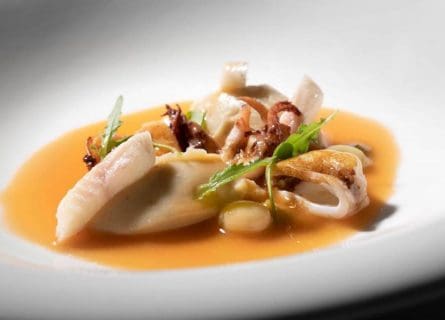
Baby Squid, and Smoked Eel - Restaurante rodero (see below) Gastronomy & Wine
Abundant fish and seafood have long distinguished the cuisine of Northern Spain from the Atlantic. And despite its landlocked status, Pamplona does not disappoint gastronomes searching for divine seafood; its relative proximity to the Cantabrian Sea has led to the creation of several traditional dishes that use hake, sea bream, horse mackerel, and baby squid to fantastic effect. Cod stew with red peppers is one of our personal favorites.
But ultimately, Navarra is the home of flavorsome meat and delicious, fresh produce, arguably some of the finest in Spain. The region has a long and proud culinary tradition involving friends and family dedicating a lot of time to enjoying good food and wine. The most famous meat dish is the “caldereta,” a potent mix of lamb – or rabbit – potatoes and several vegetables. A mild, relatively wet climate may put a potential dampener on summer celebrations. Still, the upside is beautiful green scenery that yields a variety of fresh vegetables, particularly artichokes, little gem lettuces, white and red cardoons, borages, piquillo peppers, asparagus, and beans. The Porrusalda is a lovely winter-warming vegetable stew, while the estellesa soup combines lard, rice, and milk. Migas (deep-friend breadcrumbs) is another Navarran specialty.
Meanwhile, no household in Pamplona can omit the serving of ox stew following the Los Sanfermines festival, nor roast lamb served with tomatoes and peppers. Roast suckling pig and kid are also firm favorites – Navarran gastronomy is usually defined by its wholesomeness and deference towards seasonal ingredients rather than sophisticated culinary techniques. Navarrans are also particularly fond of the hunt and wild game, ensuring that restaurants are endowed with wild boar, venison, partridge, quail, and pigeon in the autumn/winter months.
All of which pairs very nicely with Navarra’s growing range of red and white wines. Although Rioja grabs all the headlines, Navarra is increasingly one of the great unsung heroes of Spanish winemaking, offering excellence and astonishing value in equal measure. The region offers a complex mosaic of terroirs and micro-climates, from the colder and wetter northern mountainous sub-zone to the center’s drier conditions. Grenache thrives in this climate, offering wines with bright acidity and an inimitable freshness and sense of place. The region also has a broad cross-section of Spanish and international varieties, including Tempranillo, Cabernet Sauvignon, Merlot, Graciano, Viura, Malvasia, and Chardonnay. The top names to look out for are Bodegas Julian Chivite – their 125 Chardonnay is arguably the best white wine in Spain – Domaines Lupier, Bodegas Ochoa, and Palacio de la Vega.
Guide to Basque Cuisine: Read more
Nearby Wine Regions
-
 Embark on a sensory journey through Basque Wine Country, exploring its rich terroir and exquisite vintages. Plan your trip today! Read more
Embark on a sensory journey through Basque Wine Country, exploring its rich terroir and exquisite vintages. Plan your trip today! Read more -
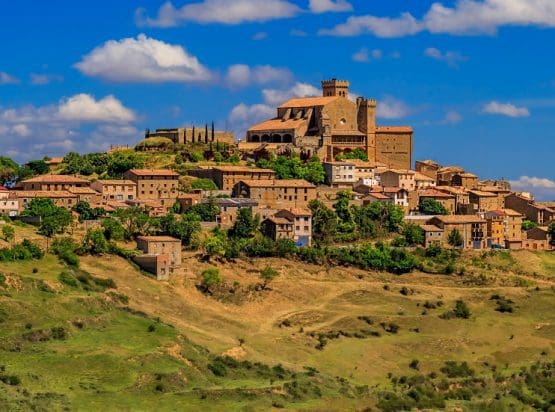 Discover the essence of elegance and flavors of Navarra. Explore top wineries, vineyards, and tasting experiences. Plan your trip today! Read more
Discover the essence of elegance and flavors of Navarra. Explore top wineries, vineyards, and tasting experiences. Plan your trip today! Read more -
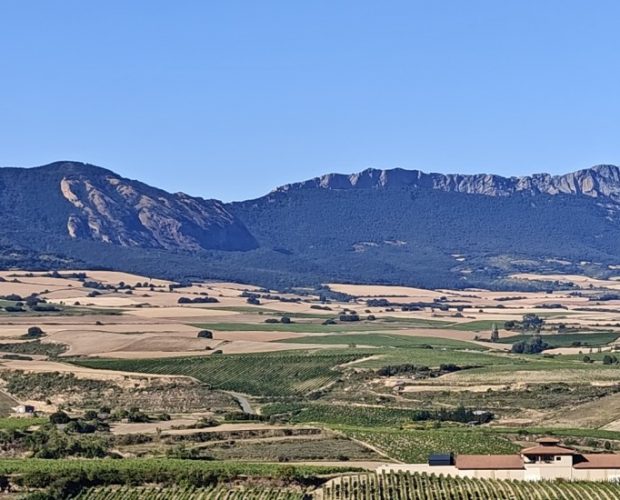 Experience the rich flavors of Rioja Alavesa wines. Explore its vineyards and wineries for a unique wine-tasting adventure. Plan your trip today! Read more
Experience the rich flavors of Rioja Alavesa wines. Explore its vineyards and wineries for a unique wine-tasting adventure. Plan your trip today! Read more -
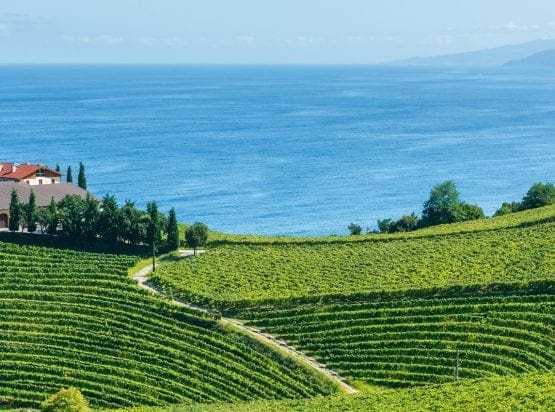 Learn about the vibrant flavors of Txakoli wine amidst breathtaking Basque landscapes. Explore our comprehensive guide. Plan your trip today! Read more
Learn about the vibrant flavors of Txakoli wine amidst breathtaking Basque landscapes. Explore our comprehensive guide. Plan your trip today! Read more
Highlights
-
Restaurante Rodero
Restaurante Rodero, located just across from Pamplona’s Plaza de Toros, is a family-owned business with over 40 years of experience. Chef Koldo, who grew up in the kitchen, has transformed his childhood passion into a reality by creating contemporary, highly creative, Navarran cuisine. With his sisters managing the dining rooms, the restaurant has successfully embraced modernity while maintaining the authentic flavors of Navarra’s natural treasures. Cellar Tours highly recommends adding Restaurante Rodero to your list when visiting Pamplona. This eatery is a must-visit if you are seeking a high-end representation of modern Navarran cuisine. Rodero offers an exceptional dining experience showcasing Navarra’s culinary scene.
-
Cathedral
Built-in ochre-colored stone, Pamplona’s cathedral is breathtaking. It was constructed on the foundations of its 12th-century predecessor and is mainly Gothic in style, with twin towers and an 18th-century facade. Inside there are lovely choir stalls and the alabaster tomb of Carlos III and Queen Leonor.
-
Palacio de Navarra
The Baroque Palacio de Navarra is stunning. Its opulent throne room of the kings of Navarra contains a famous portrait of King Fernando VII by Goya. Outside, a statue of 1903 shows a symbolic queen upholding the fueros of Navarra, the historic laws granted to the region when it became part of a centralized Spanish state.
-
Iglesia de San Saturnino
A lovely medieval church, San Saturnino, is built on the site where St. Saturninus is said to have baptized some 40,000 townspeople.
-
Museo de Navarra
A fascinating tour of regional archaeology, Pamplona’s signature museum is well worth a look. Exhibits include Roman mosaics and an 11th-century Islam-inspired ivory casket. In addition, murals were painted during the 14th-16th centuries, a portrait by Goya and a collection of paintings by Basque artists.
Recommended for you
More information
If you would like us to customize an exclusive luxury tour, contact us and let us know your travel plans. We offer luxury food and wine tours for private groups of a minimum two guests. In addition, all of our private, chauffeured tours are available year-round upon request.


